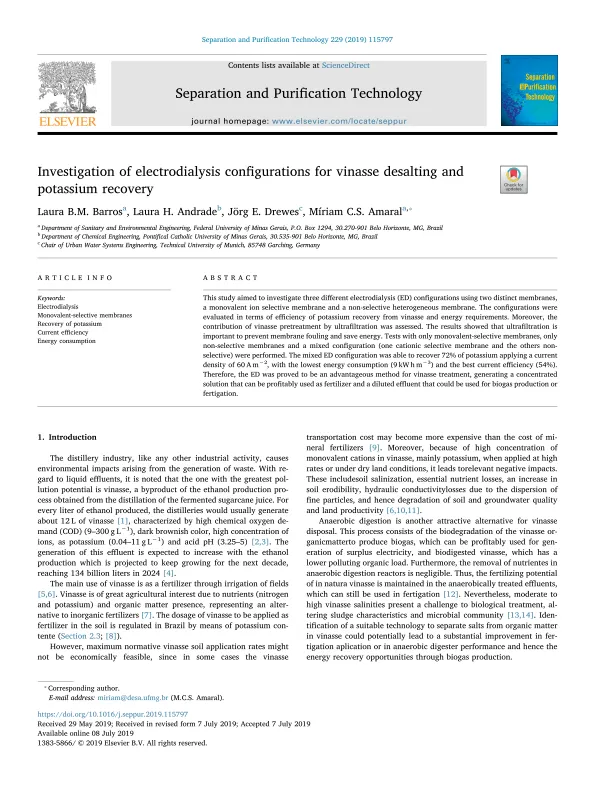This study aimed to investigate three different electrodialysis (ED) configurations using two distinct membranes, a monovalent ion selective membrane and a non-selective heterogeneous membrane. The configurations were evaluated in terms of efficiency of potassium recovery from vinasse and energy requirements. Moreover, the contribution of vinasse pretreatment by ultrafiltration was assessed. The results showed that ultrafiltration is important to prevent membrane fouling and save energy. Tests with only monovalent-selective membranes, only non-selective membranes and a mixed configuration (one cationic selective membrane and the others non- selective) were performed. The mixed ED configuration was able to recover 72% of potassium applying a current density of 60 A m−2, with the lowest energy consumption (9 kW h m−3) and the best current efficiency (54%). Therefore, the ED was proved to be an advantageous method for vinasse treatment, generating a concentrated solution that can be profitably used as fertilizer and a diluted effluent that could be used for biogas production or fertigation.
